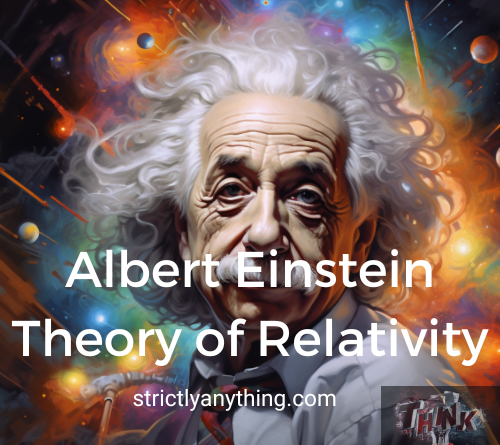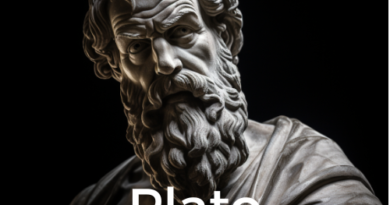Albert Einstein Theory of Relativity
Albert Einstein, a name synonymous with genius, revolutionized the world of physics with his groundbreaking theories. Born in Ulm, Germany in 1879, Einstein showed an exceptional aptitude for mathematics and physics from an early age.
Despite facing challenges in his personal life and experiencing academic setbacks, he persevered to become one of the most influential scientists in history. Einstein’s journey as a physicist began when he worked as a patent examiner at the Swiss Patent Office.
During this time, he developed his ideas on relativity and published several groundbreaking papers that challenged long-held notions in physics. These papers caught the attention of the scientific community, propelling him into the limelight.
Overview of the Theory of Relativity and its significance
At the core of Einstein’s fame lies his Theory of Relativity. This theory was divided into two parts: Special Relativity and General Relativity.
Special Relativity, published by Einstein in 1905, changed our understanding of space and time by introducing concepts like time dilation and length contraction. It shattered Isaac Newton’s classical laws by proposing that measurements were not absolute but dependent on relative motion.
General Relativity, formulated by Einstein ten years later, extended these ideas to include gravity as a curvature of space-time caused by mass or energy. It revolutionized our understanding of how celestial bodies interacted with one another.
The theory predicted phenomena such as gravitational waves long before they were observed experimentally. Einstein’s Theory of Relativity has had far-reaching consequences beyond theoretical physics.
Its implications have influenced fields ranging from astronomy to GPS technology. The theory also provided a foundation for our current understanding of cosmology and enabled us to explore concepts like black holes and the expanding universe.
Albert Einstein’s legacy not only lies in his scientific achievements but also in his ability to inspire future generations of scientists and thinkers. His theories challenged the status quo, encouraging others to think beyond the conventional boundaries of physics.
Even today, researchers continue to build upon his work, seeking a deeper understanding of the universe. In this article, we will delve into the intricacies of Einstein’s Theory of Relativity, exploring its implications and practical applications.
From understanding space-time curvature to unraveling the mysteries of black holes and dark matter, we will embark on a captivating journey through one of the greatest scientific minds in history. So fasten your seatbelts and prepare for an awe-inspiring adventure into the mind of Albert Einstein!
Understanding Special Relativity
Concept of space-time continuum and its implications
When it comes to wrapping our heads around the mind-boggling world of Albert Einstein’s Theory of Relativity, we must first grasp the concept of the space-time continuum. Imagine a fabric stretched out before you, representing both space and time.
According to Einstein’s theory, this fabric is not static but rather malleable, bending and warping in the presence of mass or energy. Picture a bowling ball placed on this fabric; it creates a dip or curvature around it.
Now envision planets, stars, and galaxies as various objects creating similar curves on this cosmic trampoline we call space-time. This realization revolutionized our understanding of gravity and how massive objects interact with their surroundings.
Explanation of time dilation and length contraction
One intriguing consequence of special relativity is the phenomenon known as time dilation. As an object moves faster relative to an observer’s frame of reference, time appears to slow down for that object compared to stationary observers. In other words, time seems to pass more slowly for objects traveling at high speeds.
This peculiar effect has been observed using atomic clocks aboard fast-moving airplanes or even satellites orbiting our planet. Similarly mind-boggling is length contraction – also a result of special relativity.
Imagine you’re observing an object moving close to the speed of light; from your perspective, you would see it appearing shorter along its direction of motion compared to its rest length when stationary. It’s as though reality itself is playing tricks on us!
E=mc²: The equivalence of energy and mass
We cannot delve into Einstein’s Theory of Relativity without discussing one equation that captures its essence: E=mc² (energy equals mass times the speed of light squared). This simple yet profound equation demonstrates that energy (E) and mass (m) are interchangeable, connected by the speed of light (c) squared. In other words, mass can be converted into energy, and vice versa.
This concept has far-reaching implications, ranging from nuclear power and atomic bombs to the understanding of how stars release enormous amounts of energy through fusion reactions deep within their cores. Albert Einstein was not only a scientific genius but also a visionary who reshaped our understanding of the universe.
His theory of relativity, with its mind-bending concepts like the space-time continuum, time dilation, length contraction, and the equivalence of energy and mass, continues to inspire awe and challenge our preconceived notions about reality. So let’s put on our intellectual seatbelts as we embark on a journey through the fascinating world of Albert Einstein’s Theory of Relativity!
General Relativity: Gravity as Curvature of Space-Time
Newtonian gravity vs General Relativity’s new perspective
When it comes to understanding gravity, we often think back to Sir Isaac Newton and his apple-falling-from-a-tree moment. Newton’s theory of gravity served us well for centuries, but it was Albert Einstein who took things to a whole new level with his Theory of General Relativity.
Einstein’s genius allowed us to view gravity in a completely different light. In Newtonian physics, gravity was described as a force that acted instantaneously across space.
Objects with mass exerted this force on each other, resulting in the familiar pull we experience. However, Einstein’s revolutionary idea was that gravity is not a force at all but rather the curvature of space and time caused by mass or energy.
The concept of warped space-time due to mass or energy
Imagine you place a bowling ball on a trampoline; it causes the fabric to curve downwards. Now imagine rolling smaller objects like marbles around the bowling ball.
They will naturally follow the curvature created by the bowling ball’s weight. This analogy helps explain how mass and energy warp space-time according to Einstein’s Theory of General Relativity.
In this view, objects don’t move because they are pulled by an invisible force; instead, they follow paths determined by the shape of space-time itself. The greater an object’s mass or energy, the more it warps the fabric of space-time around it.
This explains why even light can be bent when passing close to massive celestial bodies like stars or black holes. The concept is mind-boggling yet beautiful in its simplicity: everything that exists influences the very structure of space and time itself.
Gravitational waves: Predicted by Einstein, observed in 2015
One astonishing prediction made by Einstein’s Theory of General Relativity was the existence of gravitational waves. These are ripples in the fabric of space-time caused by accelerating massive objects, such as colliding black holes or exploding supernovas.
For a long time, scientists sought evidence to confirm Einstein’s prediction. In 2015, their efforts paid off when the Laser Interferometer Gravitational-Wave Observatory (LIGO) detected gravitational waves for the first time.
This groundbreaking discovery not only provided direct proof of one of Einstein’s most profound predictions but also opened up an entirely new field of astronomy: gravitational wave astronomy. Gravitational waves allow us to observe events in the universe that were previously hidden from our view.
They provide a unique window into phenomena like mergers between black holes or neutron stars and help us further unravel the mysteries of our cosmos. Albert Einstein’s Theory of General Relativity revolutionized our understanding of gravity.
By shifting from Newton’s idea of instantaneous force to a perspective where mass and energy warp space-time itself, Einstein paved the way for incredible discoveries like gravitational waves. The beauty lies in how everything around us influences and shapes the very fabric that holds our universe together – a testament to Einstein’s brilliance and his lasting impact on physics.
Experimental Confirmations and Observational Evidence
Eddington’s 1919 Solar Eclipse Expedition: Confirming Light Bending Around Massive Objects
Albert Einstein’s theory of relativity was met with skepticism when it was first introduced. However, it gained widespread recognition after a groundbreaking experiment conducted by Sir Arthur Eddington during a total solar eclipse in 1919. Eddington and his team observed the bending of starlight as it passed near the sun.
This confirmed Einstein’s prediction that massive objects, such as the sun, can bend light due to their gravitational pull. During the eclipse, Eddington meticulously photographed the positions of stars near the sun and compared them to their positions when the sun was not blocking their light.
The photographs revealed a slight displacement of starlight, precisely as predicted by Einstein’s theory. This monumental observation provided strong empirical evidence for the validity of general relativity, catapulting Einstein to scientific stardom.
Time Dilation Experiments Using Atomic Clocks in Motion or at Different Gravitational Potentials
One fascinating aspect of Einstein’s theory is time dilation, which suggests that time can slow down or speed up depending on an object’s motion or its proximity to a massive body. To confirm this phenomenon, scientists have conducted meticulous experiments using highly accurate atomic clocks. In one experiment known as the Hafele-Keating experiment (1971), atomic clocks were placed aboard commercial airliners flying eastward and westward around the globe while synchronized clocks remained stationary on Earth.
Surprisingly, upon comparing these clocks after their journeys, scientists discovered that those aboard planes had ticked slightly slower than their ground-based counterparts – confirming time dilation. Similar experiments have been conducted using atomic clocks placed at different elevations on Earth’s surface.
Clocks positioned at higher altitudes—where gravitational pull is slightly weaker—tick faster compared to clocks positioned at lower altitudes. These experiments provide tangible evidence supporting Einstein’s theory of relativity and the concept of time dilation.
GPS System: Practical Application of General Relativity for Accurate Positioning
Did you know that Albert Einstein’s theory of relativity plays a crucial role in making GPS systems as accurate as they are today? The Global Positioning System relies on satellites orbiting Earth, each equipped with an atomic clock. However, due to the satellites’ high velocity and their position in weaker gravitational fields, their clocks experience time dilation effects predicted by general relativity.
To ensure accurate positioning, scientists and engineers must take into account these relativistic effects. If left unaccounted for, even small discrepancies in timekeeping between the satellite clocks and receivers on Earth could lead to significant errors in determining positions.
By implementing precise mathematical corrections based on general relativity calculations, GPS systems can achieve remarkable accuracy and provide reliable navigation services worldwide. Experimental confirmations and observational evidence have played a pivotal role in solidifying Albert Einstein’s theory of relativity.
Eddington’s solar eclipse expedition proved the bending of light around massive objects, validating general relativity. Time dilation experiments using atomic clocks have demonstrated how motion and gravitational potential affect the flow of time—a key component of Einstein’s theory.
The Global Positioning System (GPS) is a revolutionary technology that exemplifies the practical application of Einstein’s General Theory of Relativity in the realm of accurate positioning and navigation. Originally conceived as a military navigation tool, GPS has transformed into an indispensable global utility with widespread civilian and commercial applications.
At the heart of GPS lies a constellation of satellites orbiting the Earth. These satellites emit signals containing precise timing information. GPS receivers on the ground pick up these signals and use the time it takes for each signal to reach them to calculate their distance from the satellites. By triangulating signals from multiple satellites, the receiver determines its exact position on the Earth’s surface.
However, GPS signals are subject to a variety of distortions as they traverse the Earth’s atmosphere and gravitational field. This is where Einstein’s General Theory of Relativity comes into play. The theory predicts that time dilation occurs due to differences in gravitational fields, causing clocks in stronger gravitational fields to tick more slowly than those in weaker fields. The GPS satellites, being in slightly weaker gravitational fields due to their altitude, experience time dilation relative to clocks on Earth’s surface. If these relativistic effects weren’t taken into account, GPS positions would accumulate errors at a rate of about 10 kilometers per day.
To ensure the accuracy of GPS positioning, scientists and engineers have ingeniously designed the GPS system to account for these relativistic effects. The onboard atomic clocks on the satellites are programmed to run at a slightly faster rate than Earth-based clocks, compensating for the time dilation experienced in space. This synchronization enables GPS receivers to provide remarkably precise positioning information, accurate to within a few meters.
The practical application of Einstein’s General Theory of Relativity in the GPS system has revolutionized navigation, transforming how we travel, conduct logistics, and perform everyday tasks. From guiding airplanes and ships to facilitating precision agriculture and location-based services on smartphones, GPS has become a cornerstone of modern life, illustrating the profound impact of theoretical physics on our practical world.



